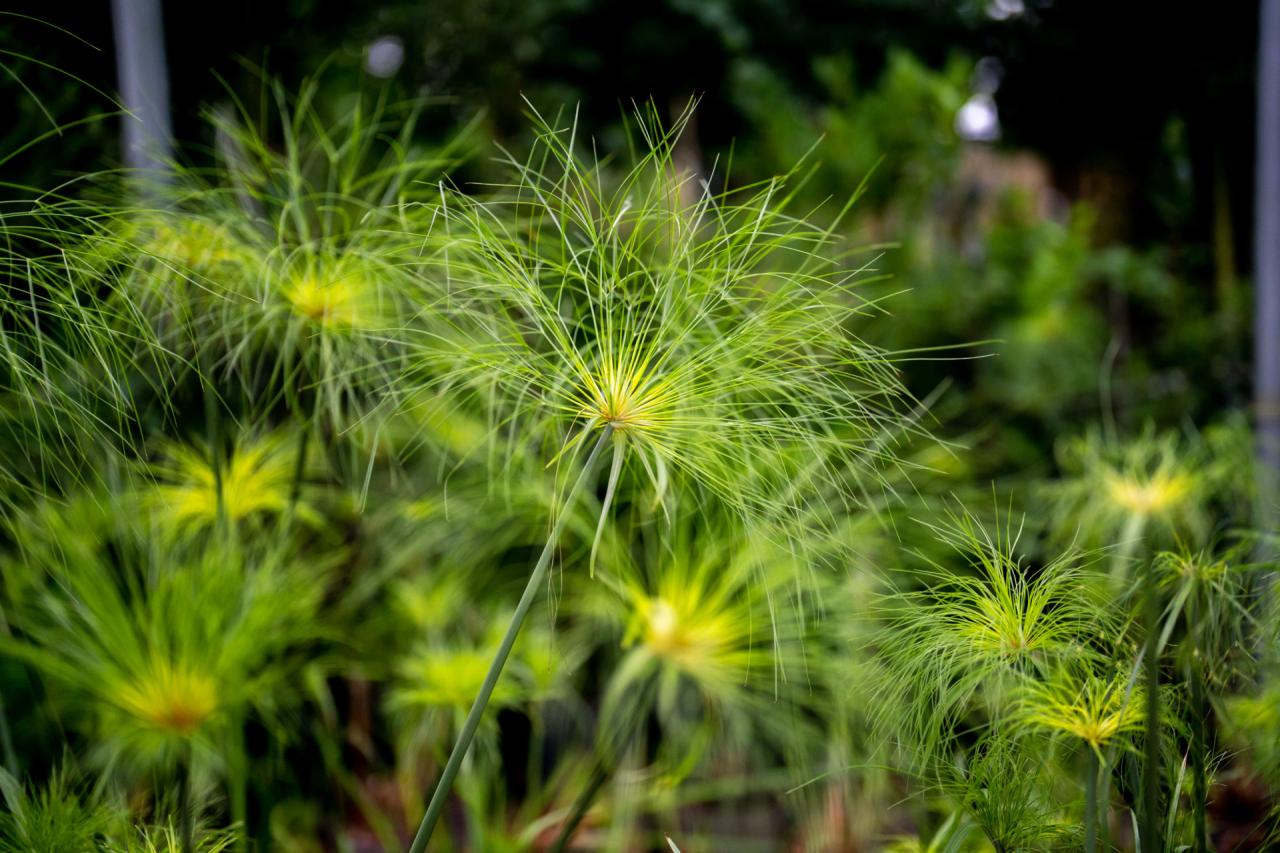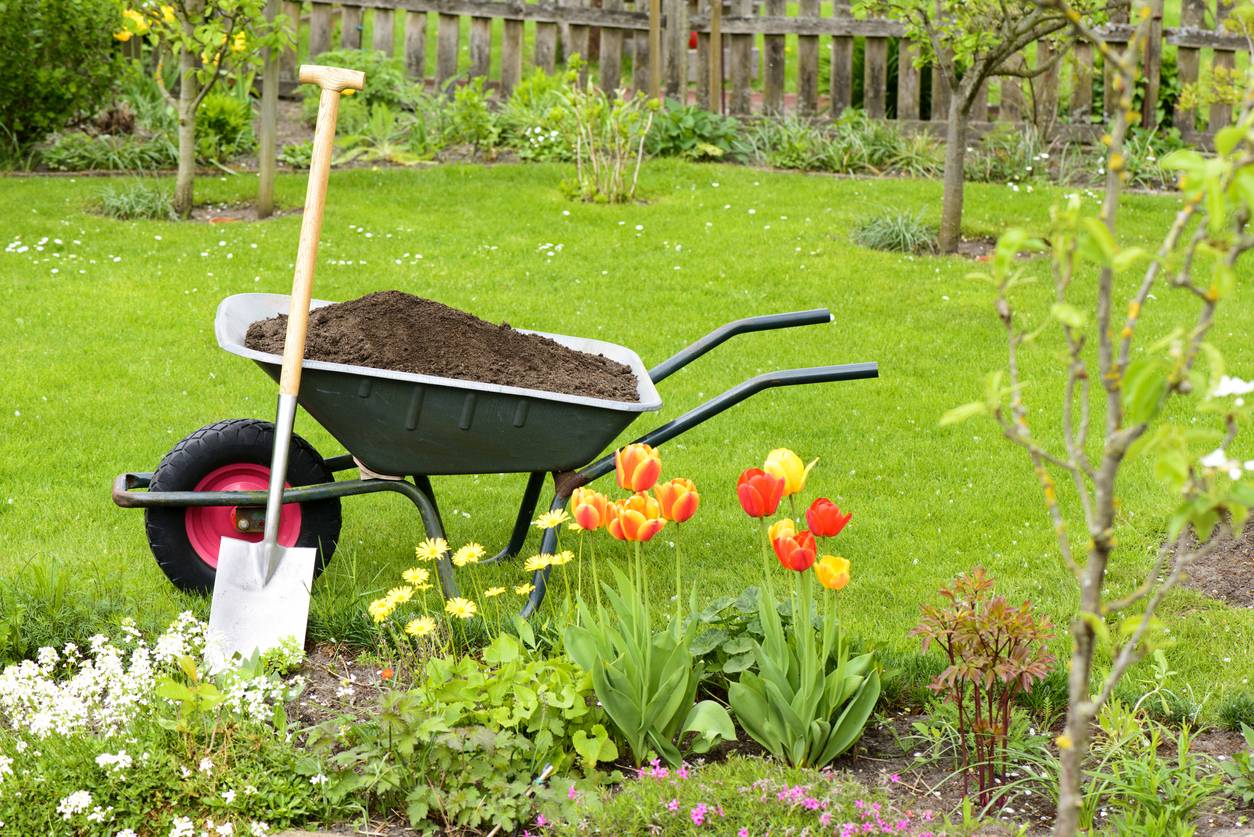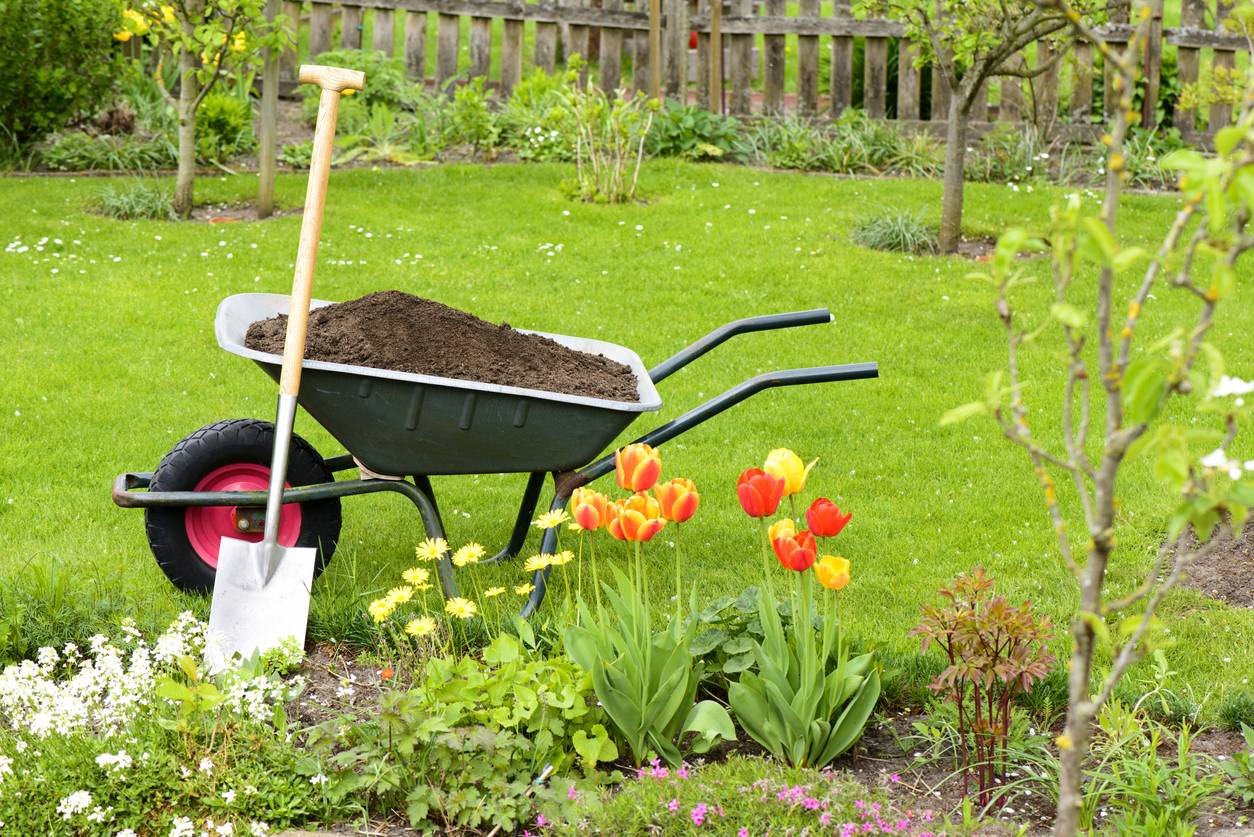How to Maintain a Stunning Papyrus Plant: Tips for a Beautiful and Lush Garden. The papyrus plant, with its elegant, feathery foliage and ancient history, adds a touch of tropical charm to any garden. This adaptable plant, native to the Nile River Valley, thrives in both water gardens and containers, making it a versatile choice for a variety of landscaping styles.
From understanding its optimal growing conditions to mastering proper care techniques, this guide will equip you with the knowledge to cultivate a stunning papyrus plant that will be the envy of your neighborhood.
Papyrus plants, with their distinctive, upright stems topped with feathery plumes, have captivated gardeners for centuries. Their versatility allows them to thrive in both aquatic and terrestrial environments, adding a touch of tropical elegance to any landscape. This guide will explore the key aspects of papyrus plant care, ensuring you can create a lush and thriving garden feature.
Introduction to Papyrus Plants
Papyrus plants, scientifically known asCyperus papyrus*, are a remarkable species with a rich history and cultural significance. These tall, graceful plants have played a pivotal role in the development of ancient civilizations, particularly in Egypt, where they were used for everything from papermaking to building materials.
Origin and History
Papyrus plants are native to the wetlands and marshlands of Africa, particularly the Nile River Valley. Their origins can be traced back thousands of years, with evidence suggesting they were used by ancient Egyptians as early as 3000 BC. The plant’s name derives from the Greek word “papyros,” which itself is believed to be derived from an ancient Egyptian word.
Unique Characteristics and Growth Habits
Papyrus plants are characterized by their distinctive triangular stems, which can grow up to 15 feet tall. These stems are topped with a cluster of feathery, umbrella-like leaves. The plants thrive in moist, sunny environments and can tolerate a wide range of water conditions.
Papyrus plants are known for their rapid growth, with some varieties reaching their full height within a single growing season.
Cultural Significance in Ancient Civilizations
Papyrus plants were highly valued in ancient Egypt, where they were used for a wide range of purposes. The plant’s fibrous stems were used to create a type of paper, known as papyrus, which served as the primary writing material for centuries.
Papyrus was also used for making mats, baskets, sandals, and even boats. The plant’s hollow stems were also used as building materials, and its leaves were used for fuel and for making rope. The papyrus plant played a crucial role in the development of Egyptian culture, contributing to the advancement of writing, art, and architecture.
The plant’s symbolism extended beyond its practical uses, with the papyrus flower often depicted in Egyptian art as a symbol of life, fertility, and rebirth.
Optimal Growing Conditions for Papyrus Plants
Papyrus plants thrive in warm, humid environments similar to their native habitats in Africa. Providing the right growing conditions is crucial for their healthy growth and vibrant appearance.
Light Requirements
Papyrus plants require ample sunlight to flourish. They prefer bright, indirect light, which means they should be placed in a location that receives several hours of sunlight daily but is not exposed to direct, harsh rays.
- Best Light:East-facing windows offer the ideal morning sun, while west-facing windows provide afternoon sun.
- Avoid Direct Sunlight:Direct sunlight can scorch the leaves and cause them to brown. If placed in a location with direct sun exposure, ensure to provide some shade during the hottest hours of the day.
- Artificial Light:If natural light is limited, you can supplement with grow lights, ensuring they are placed at a distance to prevent leaf burn.
Temperature and Humidity
Papyrus plants are happiest in warm temperatures and humid environments.
- Ideal Temperature Range:They thrive in temperatures between 65°F and 85°F (18°C to 29°C).
- Humidity:Papyrus plants require high humidity, ideally above 60%. To increase humidity, you can place the plant on a pebble tray filled with water or use a humidifier.
- Avoid Cold Drafts:Papyrus plants are sensitive to cold drafts and temperatures below 50°F (10°C). Avoid placing them near air conditioners or drafty windows.
Soil Composition
Papyrus plants prefer well-draining, fertile soil that retains some moisture.
- Ideal Soil Mix:A mix of potting soil, peat moss, and perlite or vermiculite is ideal. The addition of perlite or vermiculite improves drainage and aeration.
- Drainage:Papyrus plants are susceptible to root rot if the soil becomes waterlogged. Ensure the pot has drainage holes and use a pot with a drainage saucer to prevent water from pooling.
- Nutrient Needs:Papyrus plants are heavy feeders and require regular fertilization. Use a balanced liquid fertilizer diluted to half strength every two weeks during the growing season.
Planting and Propagation Techniques: How To Maintain A Stunning Papyrus Plant: Tips For A Beautiful And Lush Garden
Planting and propagating papyrus plants is a straightforward process that allows you to enjoy these beautiful plants in your garden or home. By understanding the proper techniques, you can ensure healthy growth and a thriving papyrus display.
Planting Papyrus Plants
Planting papyrus plants involves selecting the right container, preparing the soil, and carefully placing the plant.
- Container Size:Papyrus plants are vigorous growers and require ample space for their roots to spread. Choose a container that is at least 12 inches in diameter and 18 inches deep. Ensure the container has drainage holes to prevent waterlogging.
- Soil Preparation:Papyrus plants thrive in rich, moist soil with good drainage. A suitable potting mix can be created by combining equal parts of peat moss, compost, and perlite. Alternatively, you can use a commercial potting mix specifically designed for water plants.
- Planting Process:
- Fill the container with the prepared potting mix, leaving about 2 inches of space at the top.
- Dig a hole in the center of the container, large enough to accommodate the papyrus plant’s root ball.
- Gently remove the plant from its original container and place it in the prepared hole. Ensure the top of the root ball is level with the soil surface.
- Backfill the hole with potting mix, gently pressing down to secure the plant.
- Water the plant thoroughly, ensuring the entire root ball is moistened.
Propagation Techniques, How to Maintain a Stunning Papyrus Plant: Tips for a Beautiful and Lush Garden
Papyrus plants can be propagated using two common methods: division and seed germination.
- Division:This method involves separating a mature papyrus plant into multiple smaller plants.
- Carefully remove the papyrus plant from its container.
- Using a sharp knife or garden shears, divide the root ball into sections, ensuring each section has at least one healthy stem and a good root system.
- Plant each section in a separate container using the same potting mix and planting process described above.
- Seed Germination:Papyrus plants can also be propagated from seeds.
- Sow the seeds in a seed tray filled with a moist seed-starting mix.
- Cover the seeds lightly with the mix and mist the surface with water.
- Place the seed tray in a warm, sunny location and maintain consistent moisture.
- Once the seedlings have developed a few true leaves, they can be transplanted into individual containers.
Transplanting Papyrus Plants
Transplanting papyrus plants is best done in the spring or early summer when the plant is actively growing.
- Preparing the New Location:Select a new location that receives full sun to partial shade and has well-drained soil. Prepare the soil by adding compost or other organic matter to improve its fertility and drainage.
- Transplanting Process:
- Carefully remove the papyrus plant from its original container, ensuring the root ball remains intact.
- Dig a hole in the prepared location, large enough to accommodate the root ball.
- Place the plant in the hole, ensuring the top of the root ball is level with the soil surface.
- Backfill the hole with soil, gently pressing down to secure the plant.
- Water the plant thoroughly, ensuring the entire root ball is moistened.
Watering and Fertilizing Practices

Papyrus plants, known for their striking resemblance to ancient Egyptian scrolls, thrive in consistently moist environments. Understanding their watering and fertilizing needs is crucial for maintaining their lush, vibrant growth. This section will delve into the intricacies of providing optimal hydration and nourishment to your papyrus plant.
Watering Schedule and Signs of Imbalance
The frequency of watering depends on various factors, including the season, climate, and the size of your papyrus plant. During the warmer months, the plant will require more frequent watering to compensate for increased evaporation. In cooler seasons, the watering schedule can be adjusted accordingly.The key to successful watering is to maintain consistently moist soil without allowing it to become waterlogged.
Overwatering can lead to root rot, a serious condition that can be fatal to your papyrus plant. Conversely, underwatering can cause the plant to wilt and its leaves to turn brown.
- Signs of Overwatering:Yellowing or browning of leaves, drooping stems, foul odor from the soil, and the presence of mold or fungus are indicators of overwatering.
- Signs of Underwatering:Wilting leaves, dry and brittle stems, and a feeling of dryness in the soil are signs of underwatering.
To determine if your papyrus plant needs watering, check the top inch of soil. If it feels dry, it’s time to water. Ensure that the water drains freely from the pot, as standing water can lead to root rot.
Fertilizing for Healthy Growth
Fertilizing your papyrus plant provides it with essential nutrients to support its growth and vigor. A balanced liquid fertilizer, diluted to half strength, should be applied every two to four weeks during the growing season (spring and summer).
During the winter months, when the plant’s growth slows down, you can reduce the frequency of fertilization to once a month or even stop fertilizing altogether.
Overfertilizing can be detrimental, so it’s important to follow the instructions on the fertilizer label. Signs of overfertilization include leaf burn, yellowing, and stunted growth.
Maintenance and Pruning Techniques
Maintaining a papyrus plant involves a few essential practices to ensure its health and vibrant appearance. Regular cleaning and pruning are crucial for promoting healthy growth and preventing disease.
Removing Dead Leaves and Debris
Regularly removing dead leaves and debris from the papyrus plant is crucial for maintaining its health and aesthetic appeal. Dead leaves can harbor pests and diseases, which can spread to healthy parts of the plant. Removing them also allows for better air circulation and sunlight penetration, promoting healthy growth.
Pruning Papyrus Plants
Pruning papyrus plants is essential for maintaining their desired shape and size. It also helps to stimulate new growth and improve the overall health of the plant. The best time to prune papyrus plants is during the spring or summer when they are actively growing.
Creating a lush garden isn’t just about vibrant flowers and verdant lawns; it’s about incorporating unique elements that add character and charm. The papyrus plant, with its striking, architectural foliage, can be a stunning addition. However, to maintain its beauty, it’s important to provide the right care.
Just like you’d carefully select the perfect autumn leaves for a festive Autumn Leaf Garland DIY , you need to understand the papyrus plant’s needs to ensure its continued growth and vibrancy. By providing adequate sunlight, water, and humidity, you’ll create a thriving oasis that complements the natural beauty of your garden.
- To maintain the desired shape:Prune any stems that are growing too tall or out of control. Cut them back to the desired length, using sharp pruning shears.
- To encourage bushier growth:Pinch off the tips of the stems. This will force the plant to branch out, creating a fuller and more compact appearance.
- To remove dead or diseased stems:Cut these stems back to the base of the plant.
Identifying and Addressing Pests and Diseases
Papyrus plants are generally resistant to pests and diseases, but they can be susceptible to a few common issues. Identifying and addressing these problems early can prevent them from becoming more serious.
- Spider mites:These tiny pests can cause leaves to turn yellow and drop. You can identify them by their fine webs on the underside of the leaves. To control spider mites, use a strong stream of water to wash them off the plant or apply a mild insecticidal soap.
- Mealybugs:These pests are small, white, and fluffy, and they feed on the sap of the plant. They can cause leaves to turn yellow and drop. To control mealybugs, use a cotton swab dipped in rubbing alcohol to wipe them off the plant.
You can also apply a mild insecticidal soap.
- Root rot:This disease occurs when the soil is too wet and the roots are not able to get enough oxygen. The leaves of the plant will turn yellow and wilt. To prevent root rot, make sure the soil is well-draining and don’t overwater the plant.
Creative Uses and Display Ideas

Papyrus plants are incredibly versatile, adding a touch of tropical elegance to various settings. Their unique architectural form and lush foliage make them ideal for a wide range of creative applications in garden design and landscaping.
Incorporating Papyrus Plants into Water Features
Papyrus plants thrive in water, making them a natural choice for water features. Their tall, graceful stems and feathery plumes create a captivating focal point in ponds, water gardens, and even small fountains.
- Placement:Plant papyrus in shallow water, allowing their roots to be submerged while their stems and leaves remain above the waterline. This allows for optimal growth and creates a visually appealing contrast between the water and foliage.
- Combinations:Combine papyrus with other aquatic plants like water lilies, lotus, and water hyacinths to create a lush and diverse aquatic ecosystem.
- Scale:Consider the size of your water feature when choosing papyrus varieties. Smaller varieties are suitable for smaller ponds or containers, while larger varieties can be used to create a dramatic statement in larger water gardens.
Papyrus Plants in Container Gardens
Papyrus plants can also be grown successfully in containers, adding a touch of tropical flair to patios, balconies, and even indoor spaces.
- Container Choice:Select a large container with drainage holes to accommodate the plant’s root system and prevent waterlogging. Terracotta or plastic containers are suitable options.
- Planting Medium:Use a well-draining potting mix specifically designed for aquatic plants.
- Placement:Place the container in a sunny location with at least 6 hours of direct sunlight daily.
- Water Management:Keep the potting mix moist but not waterlogged. Water regularly, especially during hot weather.
Papyrus Plants in Indoor Spaces
Papyrus plants can bring a touch of the tropics indoors, adding a sense of tranquility and natural beauty to living rooms, offices, and other indoor spaces.
Maintaining a stunning papyrus plant requires consistent care, including regular watering and fertilization. However, you can also enhance your garden’s aesthetic appeal with seasonal decorations. For a touch of autumn charm, consider crafting a gorgeous leaf garland using vibrant fallen leaves.
Check out How to Craft a Gorgeous Autumn Leaf Garland: Simple Steps for Beautiful Decor for a step-by-step guide. The vibrant colors of the garland will complement your lush papyrus plant, creating a harmonious and visually appealing garden space.
- Light Requirements:Provide bright, indirect light. Avoid placing the plant in direct sunlight, as this can scorch the leaves.
- Humidity:Papyrus plants prefer high humidity levels. Mist the leaves regularly or use a humidifier to maintain adequate humidity.
- Container Choice:Select a decorative container that complements your interior decor.
Creating Visually Appealing Displays with Papyrus Plants
Papyrus plants are remarkably versatile and can be incorporated into a variety of visually appealing displays and arrangements.
- Monochromatic Arrangements:Create a minimalist and elegant display by using only papyrus plants in a single color.
- Textural Contrasts:Combine papyrus with other plants with contrasting textures, such as succulents, ferns, or tropical foliage, to create visual interest.
- Vertical Gardens:Use papyrus plants to create a vertical garden, adding height and dimension to a space.
- Centerpieces:Create a striking centerpiece for a table or buffet by arranging papyrus plants in a vase or other decorative container.
Closure
By understanding the unique needs of papyrus plants, you can create a thriving and beautiful garden feature that will be the envy of your neighborhood. From providing the right light and water to implementing proper fertilization and pruning techniques, this guide has provided you with the tools to cultivate a stunning papyrus plant.
Embrace the ancient charm of this unique species and enjoy the tropical ambiance it brings to your outdoor space.
Helpful Answers
What are the best types of containers for growing papyrus plants?
Papyrus plants prefer containers with drainage holes to prevent root rot. Terracotta pots are a good choice as they allow for proper aeration and drainage. You can also use plastic containers, but make sure they have adequate drainage.
How often should I prune my papyrus plant?
Pruning is essential to maintain the desired shape and size of your papyrus plant. Remove any dead or yellowing leaves and trim back the stems as needed to promote healthy growth.
Can I grow papyrus plants indoors?
Yes, papyrus plants can be grown indoors, but they require bright, indirect light. They also need a humid environment, so you may need to use a humidifier or place the plant near a water source.
